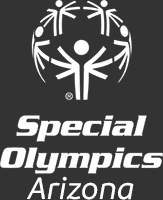What Is Williams Syndrome?
What Is Williams Syndrome?
Williams Syndrome is a rare genetic condition that affects the cognitive development and facial appearance of individuals. Individuals with Williams syndrome are known to have a unique personality that often combines over-friendliness with a high level of empathy and anxiety. Williams is a rare disorder, and many people are unaware of the signs and symptoms of the disorder. The Special Olympics Arizona team is breaking down Williams syndrome: what it is, what it affects, signs, symptoms, causes, and what to expect if your child has Williams syndrome.
What Is Williams Syndrome?
Williams syndrome is a rare, neurodevelopmental genetic condition that is characterized by a variety of physical and behavioral symptoms. Individuals with Williams syndrome may have unique physical features, delayed development, cognitive challenges, and muscular abnormalities. This syndrome can cause poor growth in childhood, causing many adults with Williams to be shorter than average. Williams syndrome is generally diagnosed when a child is a baby or in very early childhood. This will happen with a physical examination followed by a genetic test. Additional tests that can help with diagnostics include an EKG, blood pressure checks, and testing samples of your child’s urine for kidney abnormalities.
What Are the Signs & Symptoms of Williams Syndrome?
Williams syndrome can cause signs and symptoms that range in severity, and not all individuals with Williams syndrome will have the same set of symptoms. Common symptoms that many individuals with Williams may notice include:
- Chronic ear infections and/or hearing loss
- Dental abnormalities, including small or missing teeth and poor enamel
- Elevated calcium levels in the blood
- Farsightedness
- Endocrine abnormalities, such as hypothyroidism or early puberty
- Feeding difficulties in infancy
- Scoliosis
- Sleep problems
- Unsteady gait
Developmental Delays
Symptoms of Williams syndrome can cause delays in children reaching developmental milestones. Some of these milestones that can be delayed in children with Williams syndrome include learning. Children with Williams syndrome may display a mild to moderate intellectual disability. Speaking their first words and talking may be delayed, as could sitting and walking due to low body tone. Children with Williams may also be delayed in socialization and may be outgoing and very friendly but have difficulty identifying strangers, have excessive empathy and attention problems, and may deal with phobias or anxiety.
Serious Symptoms of Williams Syndrome
One of the more serious symptoms of Williams syndrome can be cardiovascular disease. The narrowing of the blood vessels near the heart is common during the formation of the fetus in individuals with Williams, which can lead to increased blood pressure, arrhythmia, and ultimately cardiac failure.
Physical Characteristics of Williams Syndrome
Children with Williams often have unique physical characteristics, including:
- Full cheeks
- Large ears
- Prominent lips
- Short stature
- Small jaw
- An upturned nose
- Wide mouth
- Vertical skin folds that cover the inner corner of the eye
Williams Syndrome Causes
Williams syndrome usually occurs when an individual is missing a small piece of chromosome 7, which is made up of several genes. This missing piece causes a missing genetic code in the instructional manual, which is your chromosomes, leading to the signs and symptoms of Williams syndrome. This is a random genetic mutation that most individuals have not inherited from their parents. However, it can be inherited, and individuals with Williams syndrome have a 50% chance of passing the syndrome onto their children.
Williams Syndrome Treatment
Once a child is diagnosed with Williams syndrome, based on a genetic test or their physical symptoms, their healthcare provider will generally determine which specialists and treatments will be most beneficial for the child. Condition management treatments are common, since there is no cure for Williams it is important to identify the symptoms and determine how these can be alleviated and treated to the best of healthcare providers’ abilities. Treatments may include evaluations and treatments by a cardiologist, early intervention programs, occupational therapy, special education programs, nutritional and nephrologist evaluations and treatments to help treat elevated blood calcium levels and visiting additional specialists as needed to address any additional symptoms.
How Common Is Williams Syndrome?
Williams syndrome is rare, affecting around 1 in every 10,000 children born in the United States.
What to Expect if Your Child Has Williams Syndrome
Every individual with Williams syndrome has varying abilities, but there are likely some things you will experience if your child has Williams syndrome. As your child grows, they may face difficulties due to Williams syndrome, but early intervention and treatment will help your child reach their full potential. Children with Williams may have birth defects around their hearts and or blood vessels that may need surgery to be corrected. They will likely need routine blood tests to keep their kidneys healthy and functioning. Your child may sit and walk a bit later than other children due to loose joints. Your child may have strong verbal and communication skills, which have the potential to mask other learning delays such as learning numbers and letters, understanding the difference between real and abstract, and their ability to understand the space between objects. Your child may have an excellent long term memory, but it is also common that they may suffer from ADHD.
Williams syndrome cannot be cured, but treatment is available to manage symptoms. It is important to work with your child’s medical provider to obtain a diagnosis, then work with other providers as needed to address any symptoms or side effects. Most individuals with Williams syndrome have a normal life expectancy, and some will need additional support as they grow into adults.



